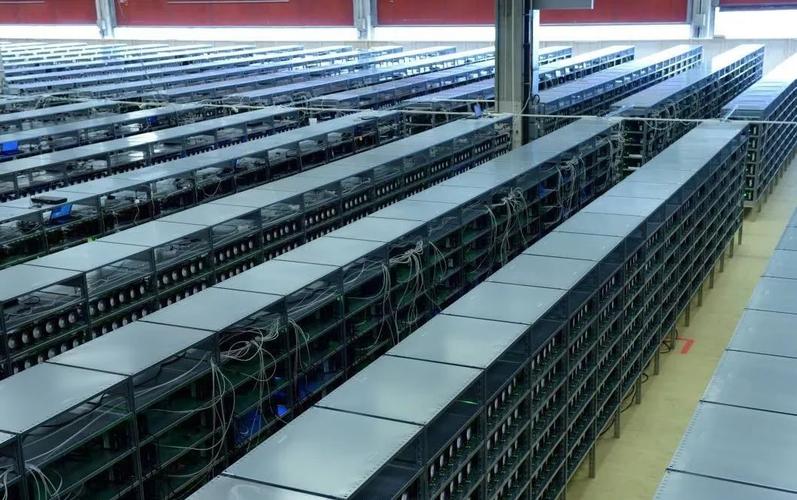The global cryptocurrency landscape is a dynamic and ever-shifting terrain, constantly reshaped by technological advancements, regulatory developments, and geopolitical forces. Russia, with its vast energy resources and a populace increasingly embracing digital assets, represents a significant player in this arena. Enter Kaspa, a rapidly ascending proof-of-work cryptocurrency boasting a unique blockDAG architecture, and its dedicated mining machines. These specialized rigs are poised to potentially revolutionize Russia’s crypto mining landscape, introducing new efficiencies and challenges alike.
Bitcoin, the undisputed king of cryptocurrencies, has long dominated the mining scene. However, its energy-intensive nature has drawn increasing scrutiny, particularly in regions like Russia where energy costs, while relatively low, are still a major factor. Alternative cryptocurrencies like Ethereum (before its shift to proof-of-stake) and Dogecoin also command significant mining activity, but Kaspa, with its focus on high throughput and rapid block times, presents a compelling alternative. Kaspa mining machines, often boasting superior hash rates and energy efficiency compared to general-purpose hardware used for mining other coins, could offer Russian miners a way to maximize profits while minimizing their environmental footprint. This could be particularly attractive given the increasing emphasis on sustainable mining practices globally.
The rise of Kaspa mining presents a multifaceted challenge and opportunity for Russian miners. On one hand, it requires a significant investment in new hardware. Existing mining farms would need to be retrofitted or expanded to accommodate these specialized machines. This upfront cost could be a barrier to entry for smaller players in the Russian mining market. On the other hand, the potential for increased profitability could outweigh these initial investments, leading to a significant boost in revenue for those who embrace the technology early. Furthermore, Kaspa’s unique blockDAG structure, which allows for faster transaction confirmation times, could attract a new wave of users and developers to the cryptocurrency, further increasing its value and the profitability of mining it.

The regulatory environment in Russia surrounding cryptocurrency mining remains in a state of flux. While the government has acknowledged the growing importance of the sector, it has yet to establish a comprehensive legal framework. This uncertainty presents both risks and opportunities. On the one hand, unclear regulations could hinder investment and innovation. On the other hand, a favorable regulatory environment could attract further investment and solidify Russia’s position as a global leader in cryptocurrency mining. The adoption of Kaspa mining, with its potential for greater energy efficiency and profitability, could strengthen the argument for a more supportive regulatory approach.
The impact of Kaspa mining machines extends beyond individual miners. It could also have significant implications for the Russian economy as a whole. The increased demand for electricity to power these machines could strain the country’s energy grid, particularly in regions where infrastructure is already stretched. However, it could also stimulate investment in new energy production and distribution capacity. Furthermore, the increased profitability of cryptocurrency mining could generate significant tax revenue for the government, contributing to economic growth and development.
Ultimately, the extent to which Kaspa mining machines impact Russia’s crypto mining landscape will depend on a number of factors, including the cryptocurrency’s long-term viability, the regulatory environment, and the willingness of Russian miners to embrace new technologies. However, the potential for increased profitability, energy efficiency, and faster transaction times makes Kaspa a compelling alternative to traditional cryptocurrencies like Bitcoin. As the cryptocurrency landscape continues to evolve, Kaspa mining machines are poised to play an increasingly important role in shaping the future of digital assets in Russia and beyond. The competition between different cryptocurrencies, and the miners who support them, will continue to drive innovation and shape the future of the digital economy.

The decentralized nature of cryptocurrencies, including Kaspa, presents unique challenges and opportunities for governments. While Russia has expressed interest in utilizing blockchain technology for various applications, it remains wary of the potential for cryptocurrencies to be used for illicit activities. Finding a balance between fostering innovation and mitigating risk will be crucial for Russia to fully realize the benefits of the cryptocurrency revolution. The responsible adoption of Kaspa mining, with its focus on transparency and efficiency, could help to build trust in the technology and pave the way for broader adoption.
Beyond the technological and economic implications, the rise of Kaspa mining also has social dimensions. It creates new opportunities for employment and entrepreneurship, particularly in regions where traditional industries are in decline. It also empowers individuals to participate in the global financial system in new and innovative ways. However, it is important to ensure that the benefits of cryptocurrency mining are distributed equitably and that the risks are properly managed. Education and awareness programs can play a crucial role in helping people understand the potential benefits and risks of cryptocurrencies like Kaspa.
Leave a Reply